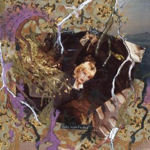|
|
 |
Dusted Reviews
Artist: Failing Lights Album: Dawn Undefeated Label: Dekorder Review date: Aug. 3, 2012 |

|
|
|
 |
If there is, in fact, a portal somewhere that leads into some Lovecraftian version of hell, my bet is it’s in the Midwest — probably in the basement of an abandoned farmhouse — and Mike Connelly (of Wolf Eyes and Hair Police fame) has seen it, and even gazed into it. The music of his solo project, Failing Lights, is some of the most unsettling ever committed to record, with Dawn Undefeated expanding on the horror ethos of its predecessor, his self-titled CD debut, released two years ago on Intransitive.
Failing Lights’ music could be described as the soundtrack to a horror movie that hasn’t been made yet. I’m not talking some sort of garish, splatter-covered slasher; this music is insidious and suggestive, bringing to mind the sinister atmospheres of The Texas Chainsaw Massacre and the opening half-hour of The Evil Dead. Connelly’s mutated synth noises and shuddering drones seep out of creepy silences. “(We Don’t Want A) Death in the Home” segues out of the organ-like drones of the title track with almost reassuring piano tinklings that quickly become distorted into a gnarly noise loop, the familiar rendered unhinged by distortion and inertia. Guitar notes drift like wisps of fog, everything is muted, and you’re left drifting in the miasma, uncertain and unsettled by what might come next. In the grand horror tradition of Val Lewton and Jacques Tourneur, it’s not what you actually see or hear that’s scary, but what is suggested by the absence of physical elements. The music on Dawn Undefeated is driven by imagination, both Connelly’s fertile nightmares, and the one you, as listener, are forced to entertain.
Like Midwestern contemporaries Nate Young (whose Demons project shares much with Failing Lights in terms of sound) or Aaron Dilloway, Connelly displays a phenomenal knack for balancing the diverse sonic elements he employs so that they evoke just the right atmosphere. Whether he’s using “real” instruments in perverse ways, or patiently submerging you in waves of crackle, drone and fuzz, he is forever in control, dropping in loops or noises like a chemist concocting a potion. Unlike those guys, though, his approach is always measured, the focus on atmosphere absolute. “To Spring” is barely more than an interlude of meaningless crackle, but it serves as an excellent introduction to the distant melodies and chopped-up found sounds of “First Made Laws.” The music of Failing Lights is sufficiently pregnant with atmosphere to work on the most primordial levels, but it’s also abstract, with musical conventions devolved into something indistinct and subverted, as if Connelly is channeling both John Carpenter and Karlheinz Stockhausen. (I’m not saying that Failing Lights’ music sounds like Stockhausen, but there is a musical thought-process going on here, with drone, found sounds and even distended folk simmering together in these tracks.) In many ways, Dawn Undefeated is a demonstration of how to manipulate textures to create something both intellectually and emotionally resonant. In that respect, Failing Lights bears greater comparison with the likes of Mike Shiflet and Luke Younger than Young or Dilloway.
Despite being a more tenebrous album, Dawn Undefeated somehow isn’t quite as immediate as Failing Lights, but it’s certainly scarier. The final track sees Connelly rattle and shake thunderous field recordings and fitful noise textures, as if he’s actually opened Lovecraft’s door in that crumbling farmhouse, and it’s collapsing all around him and us. As a study in terror, Mike Connelly’s music is subtly and beautifully unmatched. The question is: where does he — and horror music, in general — go from these nocturnal depths?
By Joseph Burnett
|







